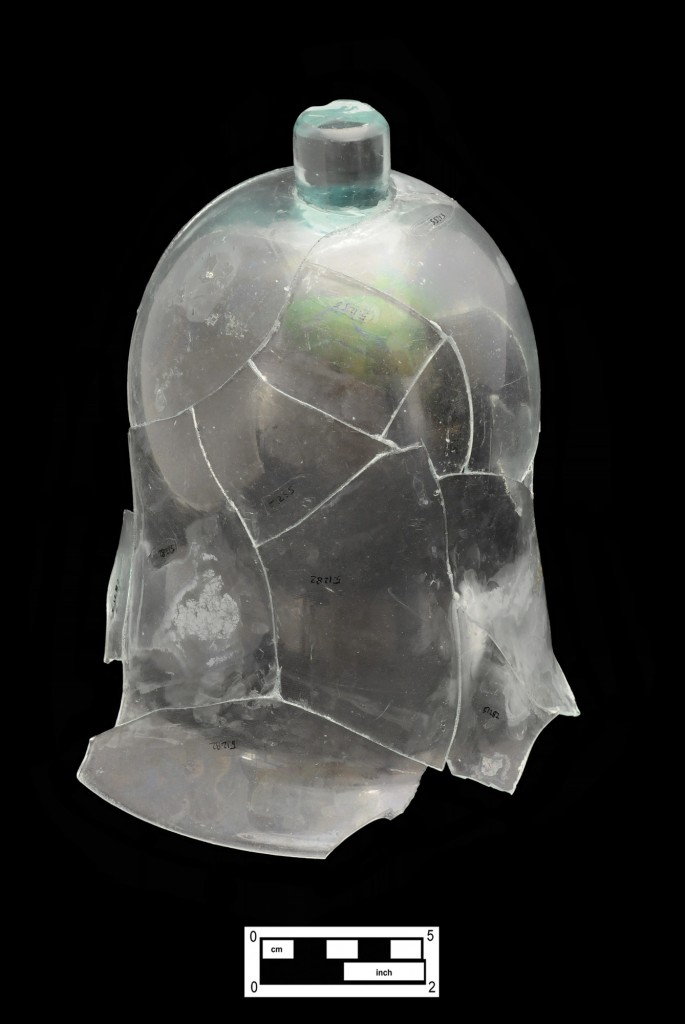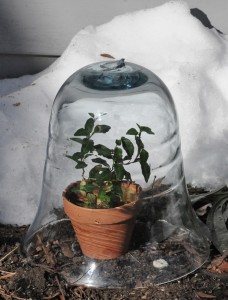March 2014 — Artifact of the Month
Ushering in Spring – A Bell Glass or Garden Bell

Archaeologists excavated this bell-glass from the Fishtown section of the city of Philadelphia. Bell-glasses, which are also called garden bells or cloches, were used by gardeners as incubators. Their dome-shaped glass traps heat and moisture while protecting delicate seedlings from harsh winds, unpredictable frosts, deer, and other dangers. Gardeners used bell-glasses to force seed germination and to extend the growing season of plant cuttings.
Archaeological research reveals the use of English-style bell-glasses in colonial Virginia, where they were among the earliest products made in American glass factories. Historical records indicate that bell-glasses were made in Pennsylvania as early as 1767, at Henry William Stiegel’s glasshouse in Manheim.
In the 1770’s, the Philadelphia Glass Works of Kensington advertised bell glasses, along with other wares, in a period publication entitled, Pennsylvania Packet. Philadelphian Bernard McMahon — who was Thomas Jefferson’s horticulture confidant, and the curator of Lewis and Clark’s plant specimens — provided instructions for using bell-glasses in his popular American Gardener’s Calendar. Eleven editions of McMahon’s Calendar were published between 1806 and 1857.
The bell-glass specimen shown here is just one of many thousands of artifacts recently recovered by archaeologists contracted for a local Pennsylvania Department of Transportation (PENNDot) project. The archaeologists are employees of URS Corporation in Burlington, New Jersey.
Adapted (by Patrice L. Jeppson for the Philadelphia Archaeological Forum) from printed material produced by Mary Mills, Historic Glass Specialist with URS Corporation.
by admin
